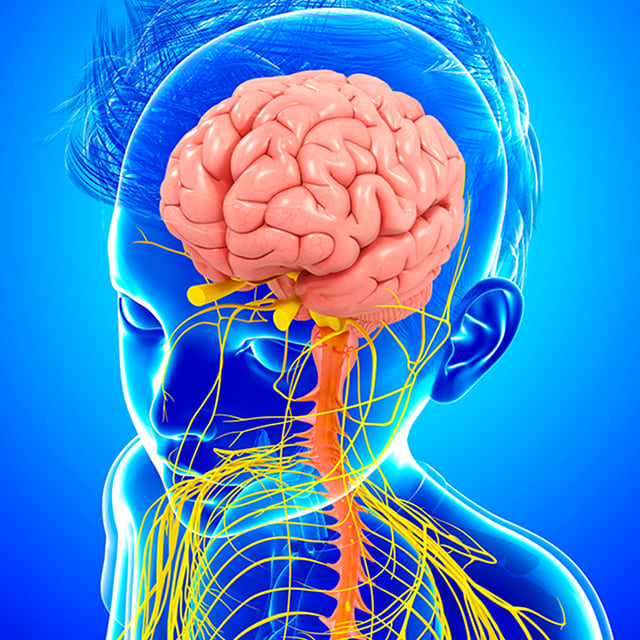Translation, please
We have interpreters for Cantonese, Mandarin, Spanish, Russian, American Sign Language and more.
Request an interpreter

Hydrocephalus is an abnormal buildup of cerebrospinal fluid (CSF) in the brain. CSF is a colorless liquid surrounding the brain and spinal cord that protects them from injury. It also carries nutrients to the brain and spinal cord and takes away waste.
Normally, CSF moves through the brain and around the spinal cord, then is absorbed into the bloodstream. In hydrocephalus, the fluid fails to drain and therefore accumulates, putting pressure on the brain. This can happen due to:
Congenital means present at birth, so children with congenital hydrocephalus are born with the condition. But hydrocephalus can also occur later in life if a tumor, injury or disease interferes with CSF flow or absorption. Doctors call this acquired hydrocephalus.
Hydrocephalus gets its name from the Greek word for water (hydro) and head (cephalus). It affects 1 out of every 1,000 newborns.

One of the nation's best for neurology & neurosurgery

Ranked among the nation's best in 11 specialties
The most common cause of congenital hydrocephalus is obstruction of the cerebral aqueduct, a long, narrow passageway between the brain's third and fourth ventricles (cavities). This may result from an infection, hemorrhage, tumor or arachnoid cyst (an abnormal CSF-filled sac).
Other medical problems sometimes associated with congenital hydrocephalus include:
Infants with congenital hydrocephalus may show these signs:
With sophisticated fetal imaging technologies, congenital hydrocephalus can be detected as early as the third or fourth month of pregnancy, although abnormal expansion of brain cavities becomes easier to see by the fifth or sixth month. Tests to identify hydrocephalus before your baby is born include:
Although congenital hydrocephalus can be detected before birth, it's more commonly diagnosed at birth or shortly thereafter. If there's concern that your child could have hydrocephalus, our experts will thoroughly evaluate their physical condition.
This evaluation may include imaging studies, such as ultrasound, computed tomography (CT) scans, magnetic resonance imaging (MRI) scans or techniques for monitoring pressure inside the skull.
Even if diagnosed in utero, congenital hydrocephalus generally isn't treated until after birth.
The most common treatments for congenital hydrocephalus are to remove its cause, such as a tumor or other blockage, or to insert a shunt. A shunt is a small plastic tube that diverts excess CSF from the brain to another part of the body, where it can be reabsorbed.
Some children can be treated with a procedure called endoscopic third ventriculostomy. In this procedure, a small hole is made in the floor of the brain's third ventricle, allowing CSF to bypass the obstruction and flow toward the area where the body can reabsorb the fluid.
Our team will design a treatment plan tailored to your child's specific needs. The plan may include more than one kind of treatment. The team will explain any risks or possible complications from your child's treatments to you beforehand.
If your child's treatment for hydrocephalus includes medication, be sure they take it as instructed. Bring your child to all follow-up appointments with the care team.
Hydrocephalus can pose risks to mental and physical development, and some children experience developmental delays. Along with timely diagnosis and treatment, physical rehabilitation and educational programs can improve outcomes for many children.
UCSF Benioff Children's Hospitals medical specialists have reviewed this information. It is for educational purposes only and is not intended to replace the advice of your child's doctor or other health care provider. We encourage you to discuss any questions or concerns you may have with your child's provider.
 9
9

Translation, please
